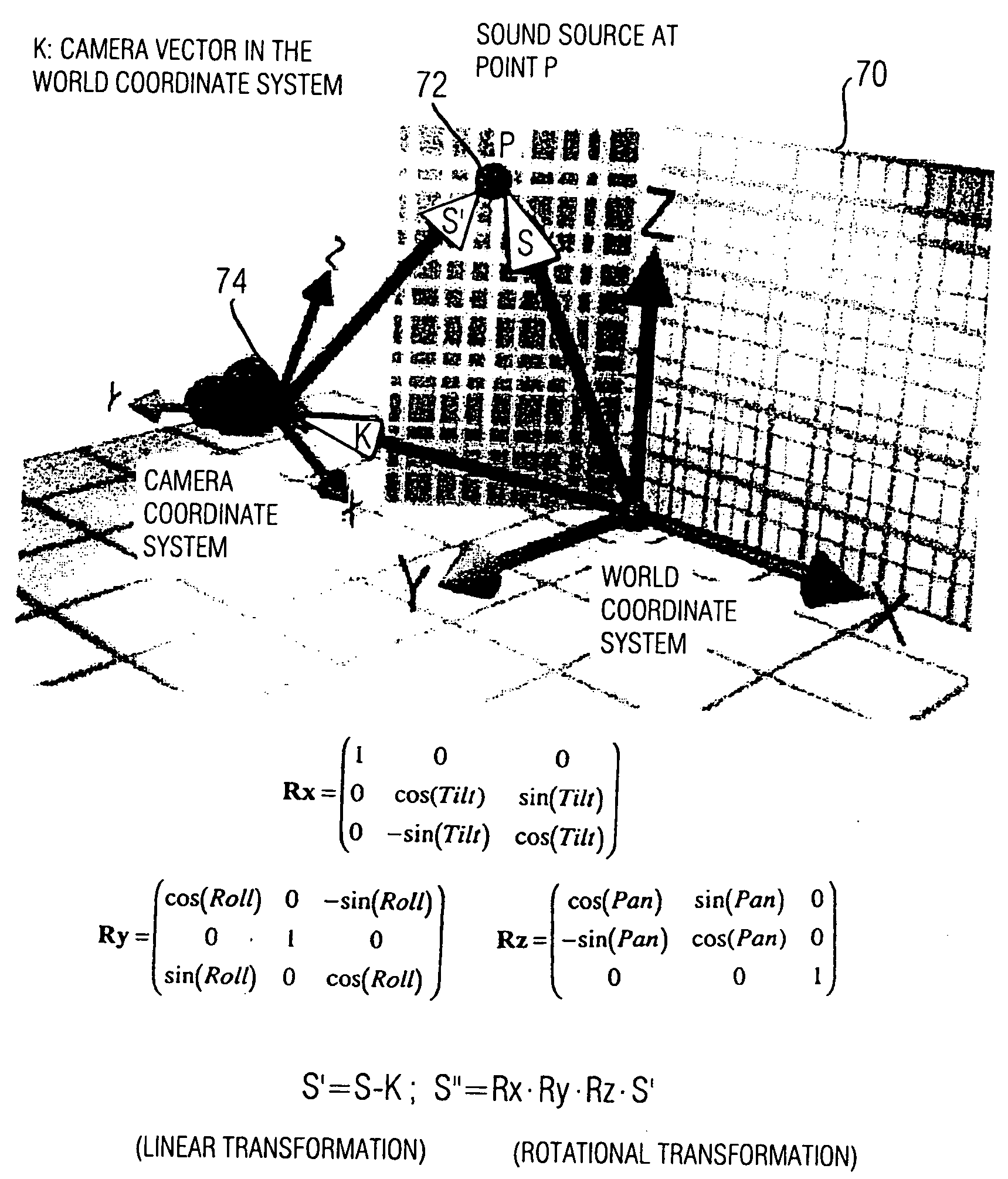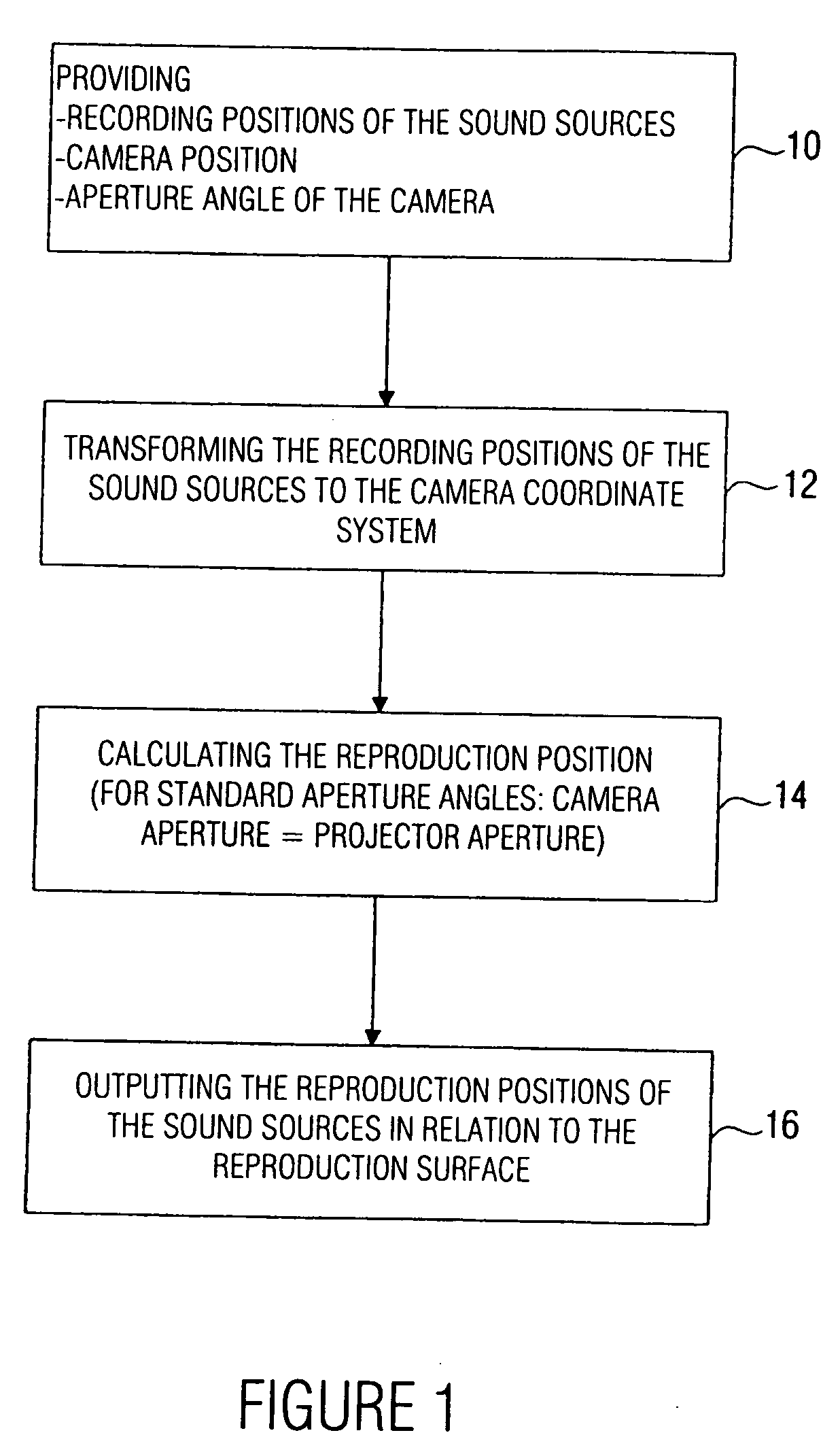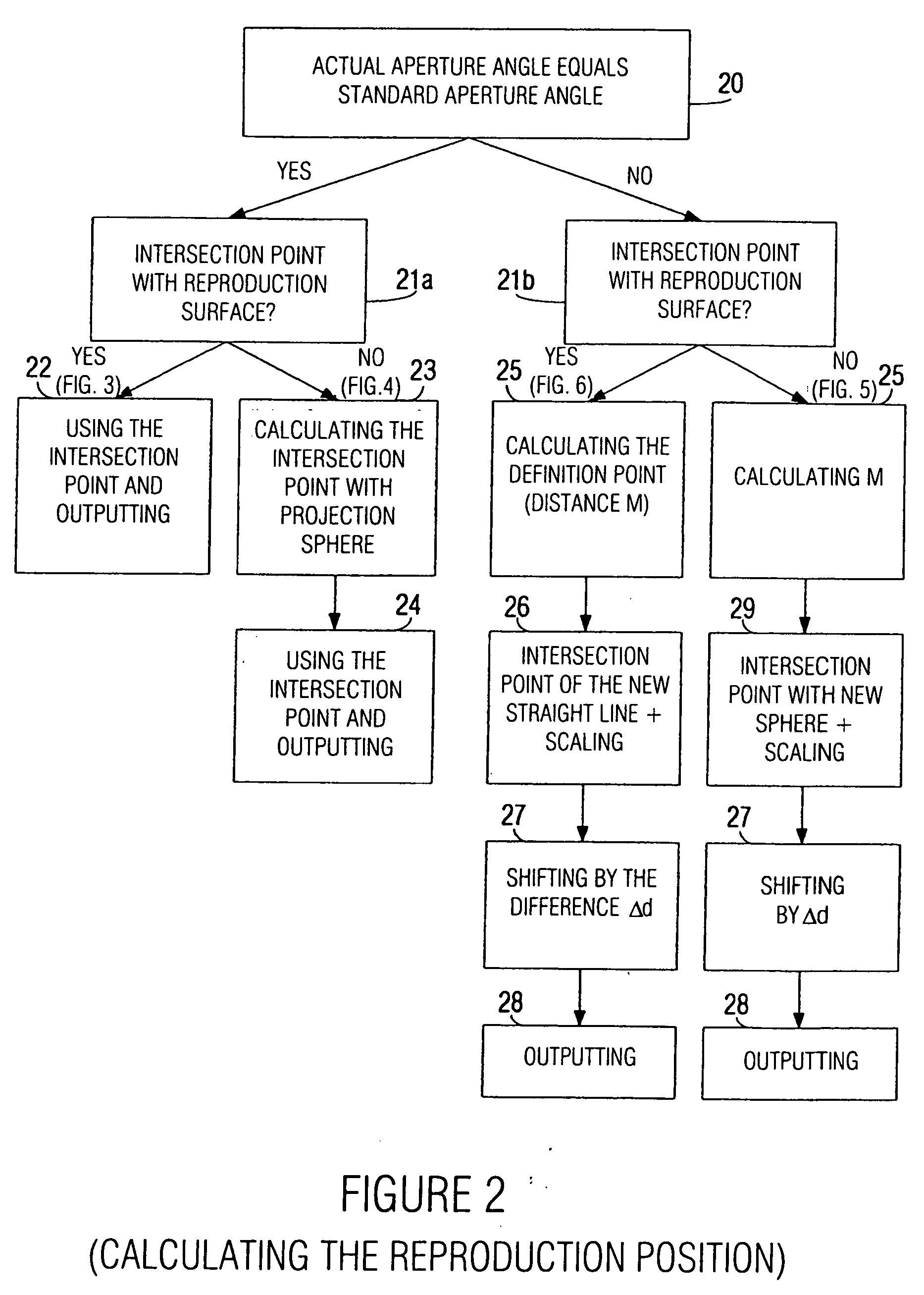Device and method for determining a reproduction position
a technology of reproduction position and device, applied in the field of audio reproduction techniques, can solve the problems of significant audio quality decline, low spatial sound reproduction quality, and only rarely used wave-field synthesis in practice, and achieve the effects of low expenditure, improved accuracy, and reduced nois
- Summary
- Abstract
- Description
- Claims
- Application Information
AI Technical Summary
Benefits of technology
Problems solved by technology
Method used
Image
Examples
Embodiment Construction
[0086]FIG. 1 shows an overview block diagram of the inventive device for determining a reproduction position, FIG. 2 showing a more detailed representation of the means for calculating the reproduction position of FIG. 1.
[0087] In particular, the inventive device shown in FIG. 1 and / or the inventive method diagrammatically depicted in FIG. 1 serve to determine a reproduction position of a source of sound for an audio-visual reproduction of a film scene from a plurality of individual pictures or frames with regard to a reproduction surface having a predetermined width, and with regard to a projection source having a projection reference point. The reproduction surface may be, for example, a screen in a cinema. The width of the screen will vary from cinema to cinema. At any rate, however, it is predetermined, i.e. specified by the cinema in question. The projection source may be a cinema film projector, as is usually employed in cinemas or other facilities. Alternatively, the project...
PUM
 Login to View More
Login to View More Abstract
Description
Claims
Application Information
 Login to View More
Login to View More - R&D
- Intellectual Property
- Life Sciences
- Materials
- Tech Scout
- Unparalleled Data Quality
- Higher Quality Content
- 60% Fewer Hallucinations
Browse by: Latest US Patents, China's latest patents, Technical Efficacy Thesaurus, Application Domain, Technology Topic, Popular Technical Reports.
© 2025 PatSnap. All rights reserved.Legal|Privacy policy|Modern Slavery Act Transparency Statement|Sitemap|About US| Contact US: help@patsnap.com



